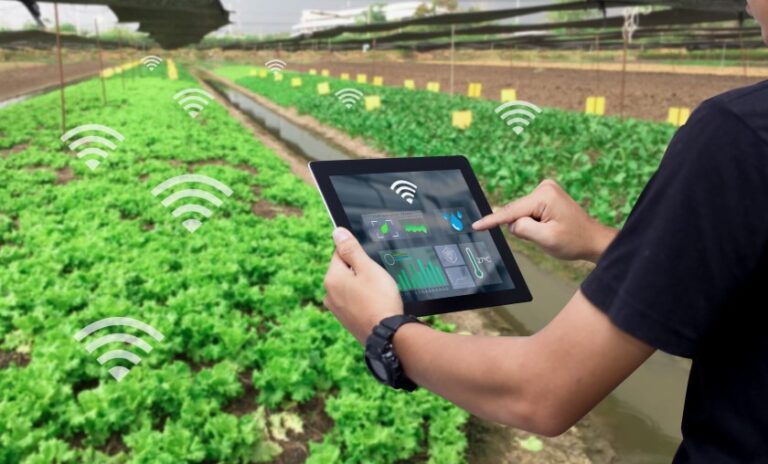In the context of IoT, a “What is iot hidden menu” typically refers to a set of features or settings not immediately visible or accessible to the average user. These menus are designed to allow developers, technicians, or advanced users to access functions that can help in troubleshooting, configuring, or optimizing the device.
What is the IoT Hidden Menu?
Why Does it Exist?
The existence of such hidden menus is primarily for service, maintenance, and advanced customization that could potentially disrupt normal device operation if misused. Manufacturers often restrict access to these menus to prevent inadvertent changes that might lead to malfunctions or vulnerabilities.
How Does IoT Work?
The Internet of Things (IoT) operates by connecting devices to the internet, enabling communication, data exchange, and automation. Here’s how it works:
Devices with Sensors or Actuators: IoT devices have built-in sensors (to collect data) or actuators (to perform actions).
Example: A temperature sensor in a smart thermostat.Connectivity: Devices connect to a network, such as Wi-Fi, Bluetooth, cellular, or LPWAN, to transmit data.
Example: A smart home camera connects to Wi-Fi for remote monitoring.Data Collection and Transmission: Sensors collect real-time data and send it to a central platform or cloud storage for analysis.
Example: Fitness trackers send heart rate and step data to mobile apps.Cloud or Edge Computing: Collected data is processed and analyzed, either in cloud platforms for complex tasks or at the edge for faster responses.
Example: Predictive maintenance algorithms running on cloud servers.Command and Control: Once analyzed, decisions or commands are sent back to the devices to trigger actions or adjustments.
Example: A smart irrigation system turns on water sprinklers when soil moisture drops.User Interface: Users interact with IoT systems through apps or dashboards to monitor, control, or customize device settings.
Example: Mobile apps that let users set a schedule for smart lights.
Through seamless integration of sensors, networks, computing platforms, and user interfaces, IoT creates automated, intelligent systems that enhance convenience, efficiency, and innovation.
Why is Internet of Things (IoT) so important?
The Internet of Things (IoT) is revolutionizing industries and daily life by enabling connectivity and automation. Here are the key reasons why IoT is so important:
Enhanced Efficiency: IoT automates processes, reduces manual intervention, and improves productivity across industries.
Example: Smart factories use IoT sensors to monitor and optimize operations.Improved Decision-Making: Real-time data from IoT devices enables better analysis and faster, data-driven decisions.
Example: Predictive maintenance in industries minimizes downtime and costs.Cost Savings: IoT reduces operational costs through energy optimization, resource management, and proactive maintenance.
Example: Smart thermostats lower energy bills.Personalized Experiences: IoT tailors services to individual needs, enhancing customer satisfaction.
Example: Wearable devices offer personalized fitness insights.Increased Safety: IoT ensures safety through monitoring systems in homes, vehicles, and workplaces.
Example: Smart smoke detectors and connected security cameras.Sustainability: IoT contributes to environmental protection by optimizing resource use and reducing waste.
Example: Smart irrigation conserves water in agriculture.Innovation: IoT drives new business models, products, and services across industries, fostering innovation.
Example: Autonomous vehicles rely on IoT for real-time navigation and control.
The IoT’s ability to connect devices, generate insights, and automate processes makes it a transformative technology critical for the future.
Internet of Things (IoT) Examples
The Internet of Things (IoT) connects devices to the internet for seamless communication and automation. Here are some popular IoT examples:
- Smart Homes: Devices like smart thermostats, lighting, and security cameras (e.g., Nest or Ring) automate and monitor home functions remotely.
- Wearables: Fitness trackers and smartwatches (e.g., Fitbit, Apple Watch) track health metrics and sync data with apps.
- Industrial IoT (IIoT): Sensors monitor machinery, improving efficiency and safety in manufacturing plants.
- Healthcare IoT: Smart devices like heart monitors and glucose trackers provide real-time patient data to doctors.
- Agriculture IoT: Smart irrigation systems and soil sensors optimize farming by monitoring environmental conditions.
- Connected Cars: IoT-enabled vehicles provide navigation, traffic updates, and autonomous driving features.
- Smart Cities: Sensors manage traffic, reduce energy use, and improve public safety systems.
These examples show how IoT enhances convenience, efficiency, and innovation across industries.
Types of IoT Applications
IoT applications span various industries, transforming processes and enhancing functionality. Here are the main types of IoT applications:
Smart Home Applications: Automates devices like thermostats, lighting, and security systems to increase comfort and security.
Example: Google Nest, Amazon AlexaIndustrial IoT (IIoT): Improves manufacturing, logistics, and operations through predictive maintenance, asset tracking, and real-time monitoring.
Example: Siemens MindSphere, GE PredixHealthcare IoT: Enables remote patient monitoring, smart medical devices, and real-time health data sharing.
Example: Connected glucose monitors, FitbitAgricultural IoT: Optimizes farming processes using smart irrigation, crop monitoring, and weather analysis.
Example: John Deere’s Precision Ag technologySmart Cities: Enhances urban management through traffic control, energy efficiency, and public safety systems.
Example: Smart streetlights, parking sensorsConnected Vehicles: Powers navigation, vehicle tracking, and autonomous driving capabilities.
Example: Tesla Autopilot, vehicle telematics systemsRetail IoT: Improves customer experiences with smart shelves, inventory tracking, and automated checkouts.
Example: Amazon Go, RFID trackingEnvironmental Monitoring: Tracks air quality, water levels, and weather conditions to support sustainability initiatives.
Example: IoT-based weather stations
Features and Functionalities of IoT Hidden Menus
IoT Hidden Menus offer a variety of tools and options that can enhance device performance and assist in troubleshooting. Some common functionalities include:
Diagnostic Tools:
Monitor device health.
Track real-time data and system performance.
Identify potential issues before they escalate.
Firmware and Software Updates:
Access beta versions of software.
Manage and customize firmware settings.
Customization Options:
Modify advanced settings to optimize device performance.
Enable or disable experimental features.
Network Configuration:
Diagnose and resolve connectivity issues.
Optimize network settings for smoother communication.
Security Settings:
View detailed security logs.
Configure enhanced encryption methods to protect data.
How to Access IoT Hidden Menus?
Accessing the IoT Hidden Menu varies depending on the device and manufacturer. Common methods include:
Key Combinations: Specific button sequences or combinations may reveal the hidden menu. For instance, pressing a combination of power, volume, or function keys simultaneously.
Web-Based Portals: Some IoT devices provide access through dedicated web interfaces. Users can log in to an admin portal using specific credentials to unlock advanced features.
App-Based Access: Many modern IoT devices integrate with companion apps that include hidden menus. These can be accessed by entering developer or debug modes.
Command Line Interfaces (CLI): For advanced users, entering specific commands via CLI can expose hidden features and settings.
Use Cases of IoT Hidden Menus
The Internet of Things Hidden Menu finds utility in various scenarios, including:
Troubleshooting Connectivity Issues: Engineers and developers can diagnose and resolve issues related to device connectivity.
Optimizing Device Performance: Advanced settings can be fine-tuned for maximum efficiency and minimal energy consumption.
Testing Experimental Features: Developers can enable and test beta features before they are officially rolled out to all users.
Enhanced Security Measures: By accessing advanced logs and encryption tools, users can safeguard sensitive data.
System Upgrades: The hidden menu often provides options to install custom firmware or upgrade system capabilities.
Benefits of Using IoT Hidden Menus

Using the IoT Hidden Menu provides numerous advantages, such as:
Enhanced Control: Users gain more granular control over device settings.
Improved Troubleshooting: Quick access to diagnostics and performance metrics reduces downtime.
Security Insights: Monitoring logs and security features help in preempting cyber threats.
Customization: Advanced options allow users to personalize their IoT experience to better suit specific needs.
Future-Proofing: Hidden menus enable early access to new technologies and features, keeping devices ahead of the curve.
The Significance of IoT Hidden Menus
Use of IoT Hidden Features
Hidden features in IoT are often used for monitoring device performance, updating firmware, configuring advanced settings for specific applications, or enabling capabilities that are not exposed to the typical end-user.
Security Concerns and Ethical Considerations
While useful, these hidden menus can also raise security concerns. Unauthorized access could lead to control over critical functions, privacy breaches, or disabling safety features. Ethically, the manipulation of hidden settings without proper authority or expertise could have unintended consequences.
Security and IoT Hidden Menus
While the IoT Hidden Menu offers significant benefits, it also comes with security implications. Unauthorized access to these menus can lead to misuse of advanced features or compromise device security. Here are some best practices:
Restrict Access: Use strong passwords and limit access to trusted personnel.
Keep Firmware Updated: Ensure the device is running the latest firmware to mitigate vulnerabilities.
Monitor Access Logs: Regularly review who accessed the hidden menu and why.
Educate Users: Inform authorized users about the responsibilities of using advanced settings.
The Future of IoT Hidden Menus
As IoT devices become more complex and ubiquitous, managing these hidden menus might become more standardized to ensure safety and security. Future developments may include more user-friendly interfaces for authorized personnel, or even AI-based tools to manage these settings autonomously.
What is Industrial IoT?
What is IoT Hidden Menu in Android?

In the context of Android devices, which are a subset of IoT, “hidden menus” refer to settings or diagnostic tools not visible to the user by default. These can typically be accessed by entering specific codes into the dialer app or through developer options in the settings menu.
The management and significance of these hidden menus are an essential aspect of IoT device administration and security, underscoring the need for careful and informed handling.
Future Trends in IoT Hidden Menus
As IoT technology evolves, hidden menus are expected to become more sophisticated, offering:
AI-Driven Diagnostics: Predictive algorithms to anticipate and prevent device failures.
Deeper Customization: Enhanced options for tailoring devices to unique user requirements.
Integration with IoT Platforms: Seamless compatibility with platforms like Google Cloud IoT, AWS IoT Core, and Microsoft Azure IoT Hub.
Remote Accessibility: Secure remote access to hidden menus for centralized device management.
Final Thoughts
However, the accessibility of these hidden features also raises significant security and ethical concerns, necessitating stringent access controls and careful consideration of potential risks. As IoT devices continue to proliferate and evolve, the management of these hidden menus will likely become more sophisticated, aiming to balance functionality with security and user safety.
FAQs
The IoT hidden menu refers to a set of concealed settings or features in Internet of Things devices. These menus are usually not accessible through standard user interfaces and are intended for use by developers or technicians for advanced configuration, troubleshooting, or performance monitoring.





